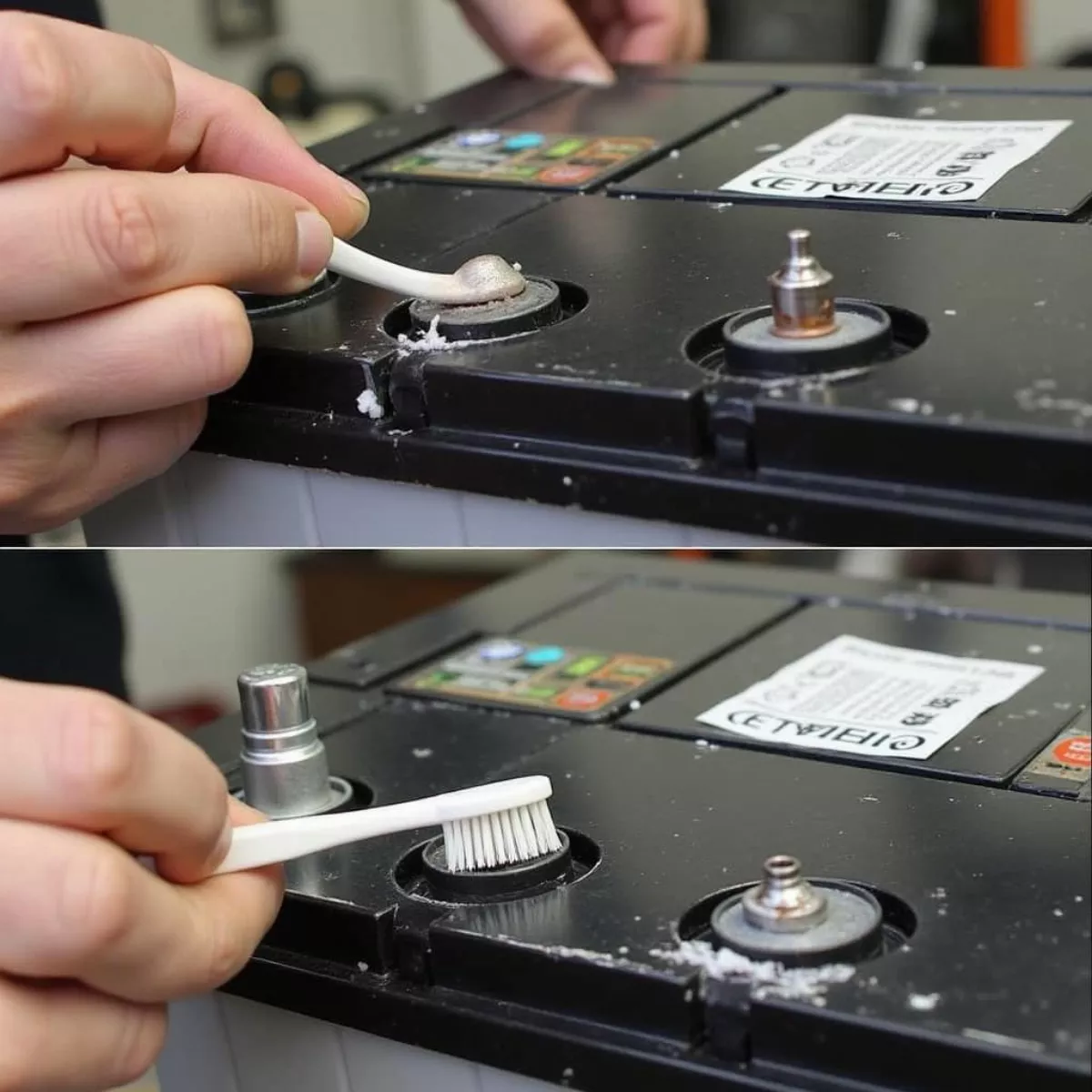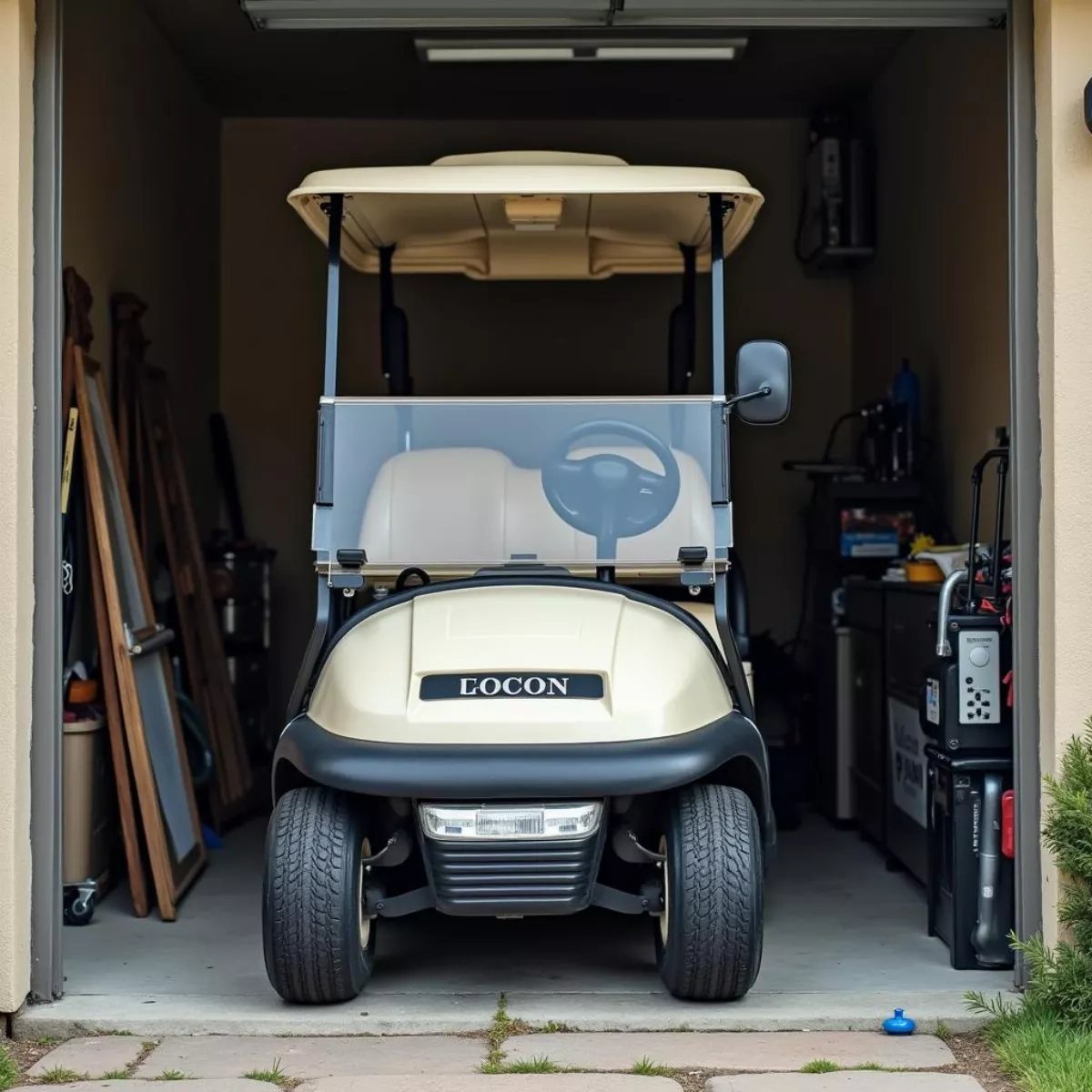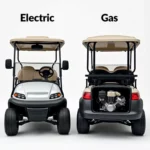If you’re a golf enthusiast, you understand how important a good golf cart is for an enjoyable day on the course. A key component of that cart is its battery. Properly maintaining golf cart batteries is crucial not only for performance but also for longevity. Whether you own an electric golf cart or simply want to ensure you get the most out of your battery, this guide covers everything you need to know!
Why Battery Maintenance Matters
You might be wondering why battery maintenance is so crucial. Well, just think of your golf cart’s battery as the heart of the machine. It’s responsible for powering everything from the motor to the lights. Poor maintenance can lead to a range of issues, including:
- Reduced performance
- Shortened lifespan
- Increased charging times
- Potential safety hazards
A well-maintained battery can enhance your golf cart’s efficiency and help you avoid costly replacements.
 Golf Cart on Course
Golf Cart on Course
Types of Golf Cart Batteries
Before diving into maintenance tips, it’s essential to understand the types of batteries commonly used in golf carts:
- Lead-Acid Batteries: These are the most common type and come in two varieties—flooded and sealed (AGM/gel).
- Lithium-Ion Batteries: More advanced, these batteries offer longer life and lighter weight but are often more expensive.
Understanding the type of battery you have will dictate how you maintain it. Each type requires a slightly different approach, but many tips will overlap.
1. Regular Charging
How Often Should You Charge?
- Daily use: Charge after every use.
- Infrequent use: Charge at least once a month.
Best Practices
- Avoid deep discharges. Try not to let the battery voltage drop below 50%.
- Use a quality charger designed for your battery type.
2. Cleaning the Battery
Keeping your battery clean can significantly affect its performance. Dirt and corrosion can lead to inefficient charging. Follow these steps:
Cleaning Steps
- Turn off the power. Don’t forget safety first!
- Use a mixture of baking soda and water to clean corrosion. A toothbrush can help target specific areas.
- Rinse and dry thoroughly to avoid any residue left on the terminals.
- Inspect the terminals. If there are any signs of damage, consider replacing them.
Schedule
- Frequency: Clean at least once a year, or more frequently if you notice buildup.
 Cleaning Golf Cart Battery Terminals
Cleaning Golf Cart Battery Terminals
3. Watering the Batteries
If you have flooded lead-acid batteries, they require regular watering to ensure they function properly. Here’s how to do it:
Watering Steps
- Use distilled water only. Tap water can contain minerals that can damage the battery.
- Check fluid levels regularly. The plates inside should be submerged in water.
- Fill as needed, making sure not to overfill.
Schedule
- Frequency: Check every month, but more frequently in hot weather.
4. Temperature Control
Batteries are sensitive to temperature. Extreme heat or cold can hinder performance and shorten lifespan.
Ideal Temperature Range
- Operating Temperature: 32°F to 120°F (0°C to 49°C)
- Storage Temperature: Keep your batteries in a garage or shaded area during extreme weather.
Tips for Managing Temperature
- Insulate your batteries in colder months.
- If possible, park your golf cart in a temperature-controlled environment.
 Golf Cart Stored in Garage
Golf Cart Stored in Garage
5. Monitoring Battery Voltage
Regularly checking your battery’s voltage can help you catch any issues early. Tools like a voltmeter can help you measure the battery’s state of charge.
Voltage Guidelines
- Fully Charged: 12.6 volts or higher
- Partially Charged: 12.4 to 12.6 volts
- Needs Charging: Below 12.4 volts
6. Periodic Maintenance Inspections
Routine maintenance checks can catch any potential issues before they escalate. Here’s what to check for:
Inspection Checklist
- Corrosion on terminals and cables.
- Fluid levels in flooded batteries.
- Physical condition of battery cases and cables.
- Any signs of swelling or leaks.
Schedule
- Check once every three months or before long trips/golf outings.
Key Takeaways
Here are the essential tips you should remember for effective golf cart battery maintenance:
- Charge regularly—Don’t let your battery drop below 50%.
- Clean your batteries—Remove dirt and corrosion at least once a year.
- Water your flooded batteries with distilled water monthly.
- Monitor storage temperature—Keep batteries cool and insulated in extreme weather.
- Check voltage regularly to catch issues early.
- Conduct periodic inspections every three months.
By following these guidelines, you’ll be well on your way to ensuring that your golf cart batteries last longer and perform better.
Frequently Asked Questions (FAQs)
1. How long do golf cart batteries last?
Typically, golf cart batteries can last between 5 to 7 years with proper maintenance.
2. Can I overcharge my golf cart battery?
Yes, overcharging can lead to overheating and damage. Always use a quality charger that suits your battery type.
3. What should I do if my battery is leaking?
Immediately disconnect the battery and consult a professional. Leaking batteries can pose safety risks.
4. How can I tell if my golf cart battery needs replacing?
Signs include a noticeable drop in performance, frequent need for charging, and visible physical damage.
5. Should I leave my golf cart plugged in all the time?
While modern chargers have float modes that prevent overcharging, it’s best to charge only when necessary.
6. What is the difference between gel and flooded batteries?
Flooded batteries require maintenance (like watering), while gel batteries are maintenance-free and less prone to spills.
7. Is it safe to work on golf cart batteries?
Always take safety precautions such as wearing gloves and eye protection when handling batteries.
8. How do I correctly dispose of my old batteries?
Most local recycling centers or battery retailers can guide you on proper disposal methods.
9. Can weather conditions affect golf cart batteries?
Yes, extremely hot or cold temperatures can impact battery performance and lifespan.
10. Is it essential to use distilled water for flooded batteries?
Yes, using distilled water is crucial to prevent mineral buildup that can harm the battery.
With this comprehensive guide, you’ll be equipped to maintain your golf cart batteries effectively, ensuring they remain reliable and performance-driven for all your golfing adventures. If you have more questions or topics you’d like covered, feel free to reach out! Happy golfing!

